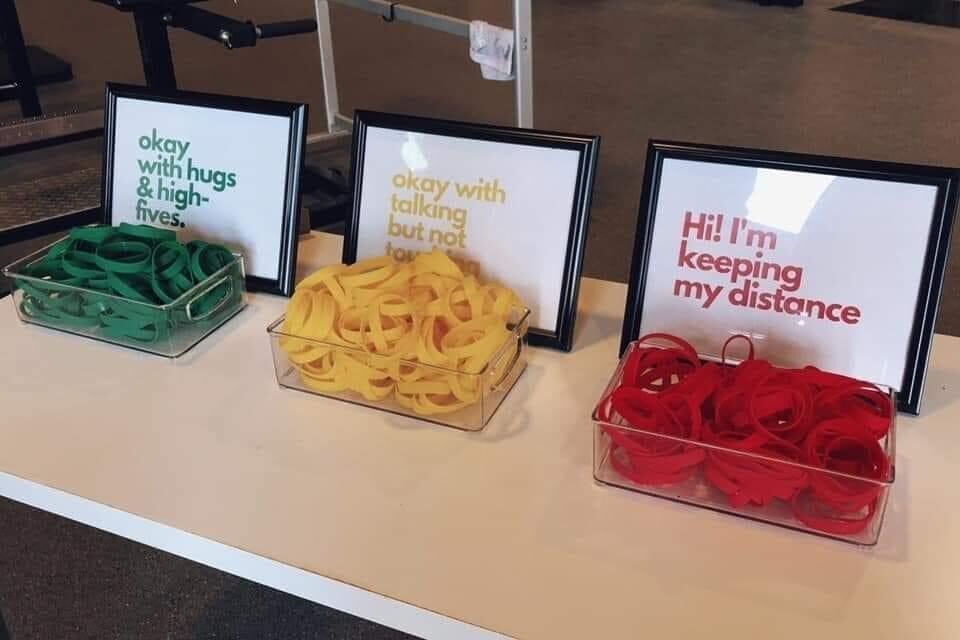A return to the new normal at work?
Return-to-work anxiety has been a common topic at home and with friends (while social distancing, of course!). Some companies are setting aggressive timelines for getting people back in the office, others are leaving it up to their employees, and still others are taking a hybrid approach.
In watching the steady rise of COVID cases, especially in the South we call home, my husband and I continue to be cautious, with the exception of him being required to return to work. Well, perhaps required is too strong. His function is highly encouraged to be onsite, following the published schedule. Another friend is going back to the office in a few weeks, following building capacity plans. He commented to me, “I’m glad I’m not in the first phase. I’m good with letting someone else go first.”
I have to wonder if there is a better way. Then, lo and behold, this week I came across a couple of re-opening approaches that resonated with me, reflecting a more employee-centric perspective to re-opening plans.
Petitions
Cloudflare is going high-touch. They have a robust, employee-centric approach for re-opening their global offices, summarized in the recent article, “We’re trying a petition-based approach to get people back to the office ASAP.” I found this strategy fascinating because it changes the approach from “we have to get people in the door because we’re paying for this space,” to “we want people in the building who need/want to be here.”
In short, they looked at the return to the office from the employee’s perspective – focusing on the employee experience.
Are they going through a lot of work to make it happen? Heck yes! Applications, surveys, interviews then matching that with data, leveling on expectations, and considering feasibility for safety protocols. This unique approach enables them to target the specific challenges for work-from-home and ideal candidates to return to the office – from simple workspace and bandwidth issues to more serious challenges such as domestic abuse.
The closing comments from Janet Van Huyss, Head of People, sums up their commitment to their employees, reaffirming their core company values: “We’re writing the playbook as we go, and there are sure to be more learnings over the next six months and into 2021. Today, what matters most is putting our people—their health, their safety, and their needs—first.”
Visual Cues
Not all companies can take a high-touch approach. But how do you keep the employee’s level of comfort in the forefront if there are strong mandates to return to the office? Bracelets!

I came across this photo in my LinkedIn feed and (literally) could not stop thinking about it. It’s such a simple way to communicate where you’re at on any given day with regard to interaction. Some days you are more anxious. You don’t really want to talk to anyone. Other days you’re feeling more comfortable and want to socialize, but still from a distance. And others are ready to jump back to our previous levels of normal contact.
Non-verbal cues are going to become increasingly important was we learn to adapt to our new “normal” – away from handshakes and hugs to creative way to express those sentiments from 6-feet away. Investing in ways to do that visually will help avoid some of those awkward interactions and normalize the sharing of comfort levels.
If bracelets don’t resonate with your culture, be creative – lanyards, flags, pins, stickers. Even better, include this as part of a small “welcome to work” kit complete with a mask, hand sanitizer, and wipes.
In the coming months, it will be important to establish new norms as we begin to operate again from an office. Now more than ever, companies should be thinking beyond safety requirements when bringing people back to work.
Think about your people, their concerns, fears, risk factors at home. Bringing a human touch, compassion, to this the transition back to work will inspire loyalty. And loyal, safe, healthy, happy employees are those that will accelerate an organization’s rebound in the new world in which we live.
Join the conversation for this post on LinkedIn to share your thoughts and comments.